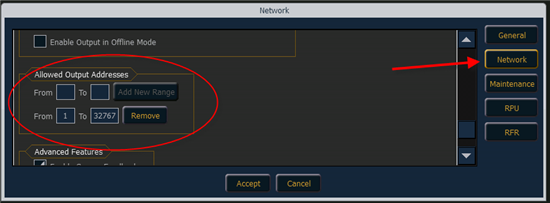A question about how the Eos/Ion partioning function "saves".
We have a design for a new building where the consultant wants to have a dimmer rack have dims 1-XX sent to one space (Theater Reh. Room) and dimmers above that to another space (Music Reh Space).
I'm aware that the consoles can partition the dimmers and channels to prevent call up and conflict, but does the partition information get saved on the console HD ?.
I do not want a scenario where a student presses "New Show:" while in the Theater space and to have all partition info lost. with conflicts resulting.
Likewise, I might end up sharing an Ion between the spaces and would desire to be able to call up the partition info. for a space, then do it again with another setup for the 2nd space.
Or: Is partitioning possible within the rack itself so as to not have dimmers 1-xx respond to any control from Room B ?.
Any help appreciated.
Steve Bailey
Brooklyn College



